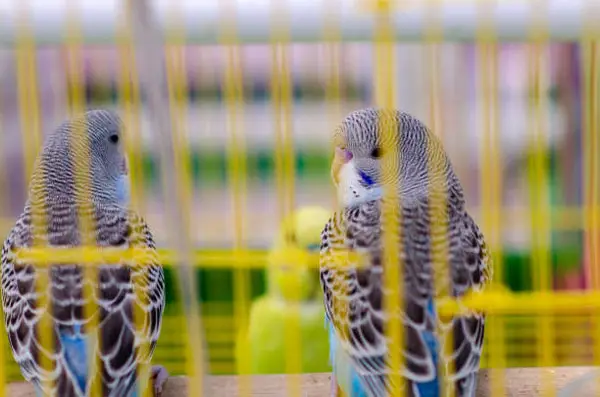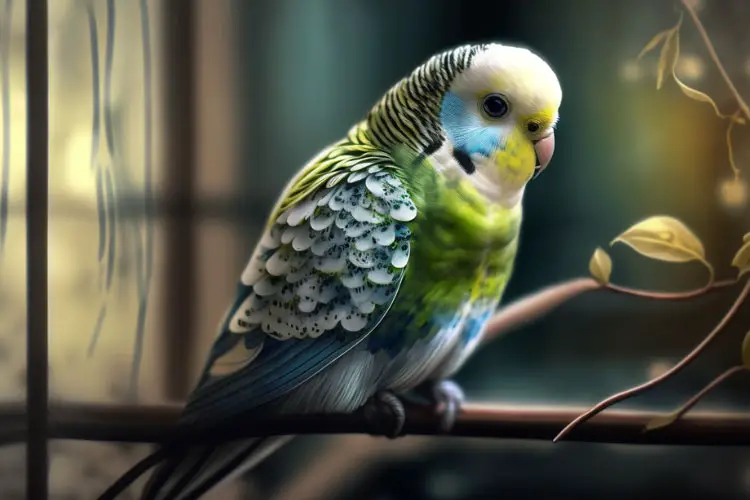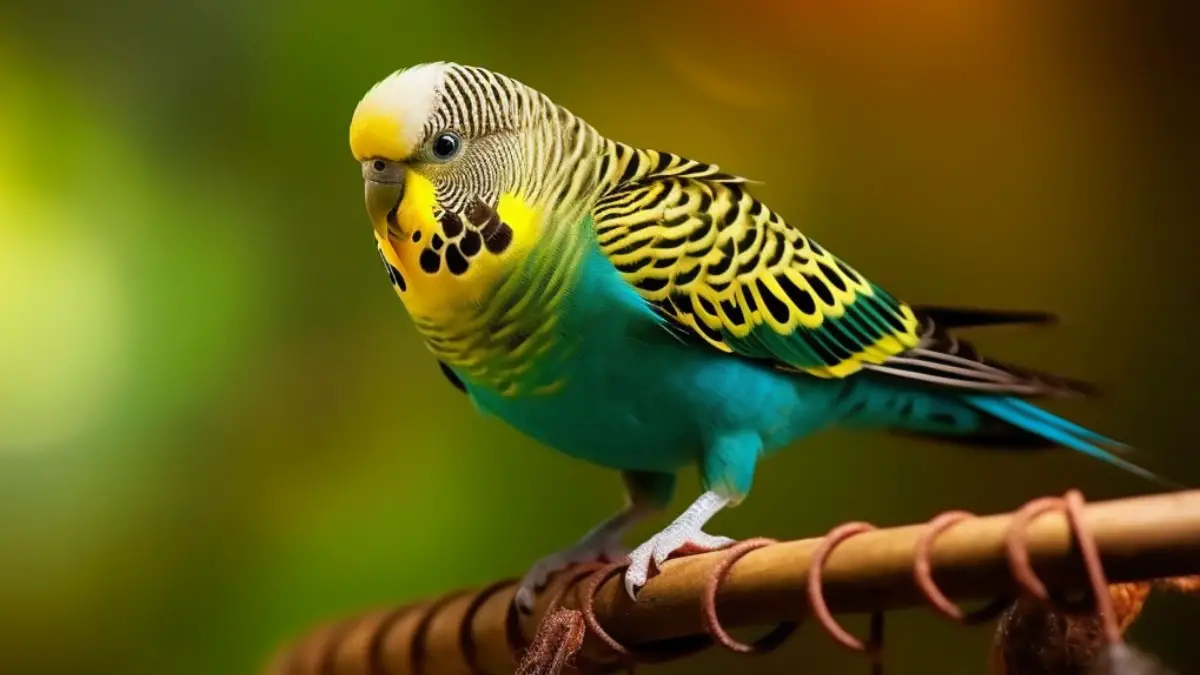Budgies communicate through signs such as head movements, tail movements, feather fluffing, and vocalizations. And knowing how to read your budgie’s body language is important for every budgie owner. You’ll get to know when your budgie is happy, contented, uncomfortable, stressed, etc.
This article will teach you the different body language signs budgies usually exhibit. Plus, we’ll cover interpretation tips for each of them to help you know the current behavior, mood, or health of your budgie.
Budgie body language guide:
Here are the most common body language signs that your budgie may exhibit and what each means.

Bobbing the head up and down
Your budgie bobbing its head is a sign that he’s happy and wants to socialize. The budgie can repeat this custom and it can be quite interesting to watch.
If you have a pair of budgies and they start bobbing to each other whenever they see you, food, or a special part of their cage, that’s a surefire sign of joy!
Males also bob their heads to woo their female counterparts when they want to mate. If the female responds positively by enjoying the bobbing behavior, they’ll end up mating.

Bobbing the head up and down may also be a budgie’s way of expressing hunger. This is especially the case for baby budgies who do it to beg for food from their parents.
However, in some unfortunate incidences, your budgie could also be bobbing its head as a sign of a health condition.
Parasitic infections and seizures are some of the health issues that could result in this behavior. Here, you need to consult your avian vet for your budgie to be examined and treated.
Cocking the head to the side
A cocked head can be a pose to help it achieve a sharper image of whatever it’s observing on its fovea. In other words, it means your budgie is curious about something.
Some cases when your budgie may do this include when he sees a new item, hears a new sound, or feels threatened by a human or another bird.
Eye pinning
This is where your budgie’s pupils dilate and contract in a rhythm as he throws his focus on an interesting object.

This usually happens when you provide your budgie with a new exciting toy or when it’s looking at its favorite toy.
A male budgie that’s about to regurgitate into its best friend or mate.
Twitching wings
Twitching wings in your budgie is a sign of excitement or preparation for mating. A male budgie may twitch its wings to impress the female counterpart it wants to mate with.
A nervous and scared budgie may also express it by twitching its wings.

However, wing twitching could also be a sign of health issues in your feathered friend.
Prolonged twitching, for instance, could mean a seizure, though your bird can recover from it and regain its perching ability.
A viral infection can also make a budgie twitch. If you suspect your budgie is ill, seek avian vet help immediately.
Budgie slightly opens its wings
This budge behavior is usually a way of showing happiness or trying to get your attention. It can also do this to ask for food or a toy.
If your budgie does this while at the same time shrugging, then it’s simply stretching.

However, your budgie slightly opening its wings could be because it’s overheating and trying to cool itself during hot weather.
Plucking of feathers
If your budgie plucks its feathers on its own, without molting or the normal feather loss, then you need to be alarmed!
The parakeets usually do this when they’re bored, lonely, or stressed.
This behavior can expose your budgie’s body to health issues, so you’ll need to take him to the vet as fast as possible for a checkup.
You can prevent your budgie from getting bored by interacting with it for a few hours every day and enriching its cage with toys to keep it busy.
Flapping feathers but not moving
When your budgie flaps its feathers but doesn’t move, it could be stretching.
Most budgies usually do this to exercise their muscles and increase their blood circulation.

Budgies who spend most of their time inside the cages and rarely enjoy time out or have clipped wings may flap their wings more frequently.
In this case, you need to ensure you provide your pet bird with a large cage with plenty of room for stretching.
Sometimes budgies also flap their wings without molting to try and get your attention or as a sign of happiness.
Fluffing out feathers
A budgie may fluff its feather when it’s cold to help converse as much heat as possible and stay warm.

If your budgie fluffs up its feathers and then returns them to their normal position, this is a way of getting rid of dirt or dead skin or getting rid of water after taking a bath.
Budgies may also show this behavior to help them relieve stress and tension—especially when you have a new bird.
Tail fanning or wagging
Tail fanning or waving is a common male budgie behavior during courtship. But it can also be a sign that a budgie is nervous.
Sometimes budgies will wag or fan their tails when they want to show aggression or to warn someone to stay away from them.

Moving the tail up and down could be a sign that your budgie is anxious or stressed.
If this behavior goes on for prolonged periods of time, then your budgie could be having a respiratory infection, and you need to take it to the vet as soon as possible.
Chirping, singing, or whistling
Budgie chirping, whistling, and singing most of the team means he’s quite happy.
However, the parrot also produces these sounds when communicating and socializing with the owner or fellow budgies.

Additional happy parakeet behaviors to look out for include:
- Movements, climbing and flying all over the cage
- Nibbling most of the time
- Playing with each other
- Flapping wings
- Shaking tongue (they may also shake the tail at the same time)
Screaming, screeching, or hissing
A budgie will produce these sounds (scream, screech, or hiss) as a sign of aggression, distress, or fear.
Screeching or screaming may also be a sign that your budgie is in pain or danger.
Hissing in budgies can be a sign that he’s feeling threatened or is trying to ward off predators or even other birds, including its cage mates.
Standing on one leg
Your budgie stands on one leg to show that he’s comfortable and relaxed. This is completely normal behavior and nothing to be alarmed about.

Your budgie may even stay in this position for hours as he constantly switches between the legs.
However, your budgie may also do this if it’s trying to keep warm. In this case, you should ensure that his environment isn’t too cold.
Final Verdict
Budgies usually communicate using their body language and knowing what each sign means can help you understand your little guy’s current mood or health status. We’ve discussed the most common budgie body language signs and their meanings in the above guide.
We hope that you can now easily tell what your budgie means when it displays various signs. And you can respond appropriately where necessary to keep your budgie happy and healthy.







